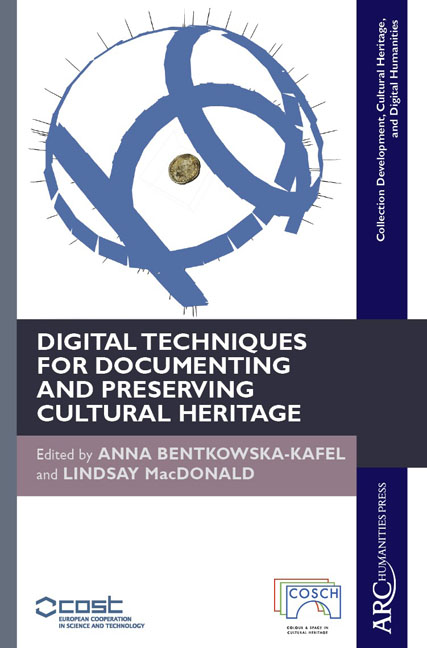Chapter 5 - A 4D Virtual Presentation of the White Bastion Fortress in Sarajevo
Published online by Cambridge University Press: 26 January 2021
Summary
ABSTRACT
The fortress known as Bijela tabija, or the White Bastion is one of the most impressive and important historical sites in Sarajevo, Bosnia and Herzegovina. It is located on the southeast outskirts of the city and offers a view over the city valley. Historically it has commanded a significant and strategic position in the city. The fortification is a part of the dominant defensive walls that surrounded the old city of Vratnik.
The historical site presents various valuable strata, from the medieval era to the present. During archaeological excavations the remains were found of a medieval fortification from the fourteenth century, and from the Ottoman period in the seventeenth century when the fortification was expanded and some new structures were built. During Austro-Hungarian rule part of the fortification and the structures inside the walls were demolished and a new group of structures was built. During the early excavation, a significant number of artefacts was found, registered, and conserved for the purpose of the exhibition hosted in the Museum of Sarajevo.
Our project “4D Interactive Multimedia Presentation of the White Bastion Fortress”, described in this chapter aims to present the historical development of this cultural heritage site through digital stories combined with interactive 3D models of the Bastion in various time periods. These models include digitized findings from the site and their 3D reconstructions.
Keywords: interactive digital storytelling, virtual cultural heritage, virtual reality, 3D virtual reconstruction, COSCH
Introduction
The age of interactive communication has changed the way people perceive information. All aspects of our lives are influenced by digital technologies. They introduced a new language, and new communication means and tools. Cultural heritage is no longer limited to museums and heritage sites, but is being communicated to the public through new methods and forms which enable users to travel virtually to the past.
Storytelling has been present in human communication since the beginning of time. Our ancestors used to tell stories and tales around camp fires. Every day of our lives can be described through a set of stories. Therefore, it is natural that storytelling plays an important role in cultural heritage presentation and its digital preservation. Museum exhibitions employ storytelling to explain the context and purpose of exhibited objects, in order to make the visitors’ experience more attractive. Virtual reconstructions of archaeological remains are becoming enhanced with stories about the objects, characters, and events from their past.
- Type
- Chapter
- Information
- Publisher: Amsterdam University PressPrint publication year: 2018



